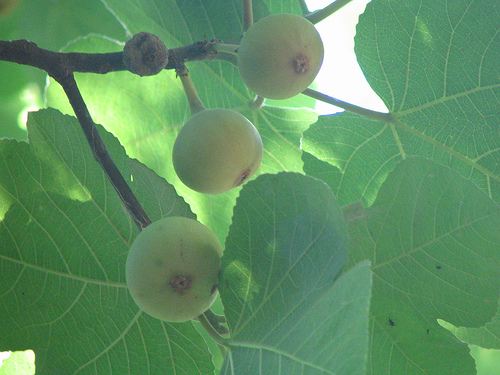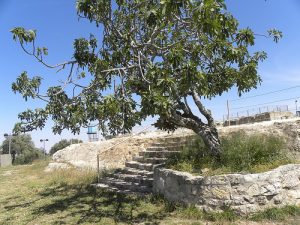Revised Common Lectionary Reflection for the Third Sunday in Lent, Year C
March 20, 2022*
He asked them, “Do you think that because these Galileans suffered in this way they were worse sinners than all other Galileans? No I tell you; but unless you repent, you will all perish as they did.” Luke 13:2-3
Once again, scripture reinforces the truth that human nature is not something subject to change. The folks gathered around Jesus are reacting to tragedies in the community. Some Galileans have been slaughtered by Pilate while making their sacrifices in the temple, their blood co-mingling with that of the sacrificial animals. In another case eighteen people are killed when the Tower of Siloam falls on them. Can’t you just imagine the whispered word spreading, the salacious gossip oozing in hushed tones, speculating about a moral connection between these folks’ sinfulness and the wrath of an angry God? We hear it in our own time, don’t we?
Plenty of religious folk try to connect the do-gooder dots between tragedy and moral turpitude. Think of the in-your-face screeds of the Westboro Baptist Church and the public prognostications of Pat Robertson, Jerry Falwell, and Sam Morris, a conservative Baptist in Tennessee who attributed the Sandy Hook tragedy to public school teachings on evolution and sexuality. No, this is nothing new, although it is sad when folks fail to remember the old adage that whenever you point a finger at someone else, there are three pointing right back at you.
In Luke’s account, Jesus does not address innocence and guilt, but rather paints sin in broad strokes that cover all humans. All need to repent. All need to turn to God; remember, no one gets out of this life alive. But Jesus doesn’t stop with this strong statement; he seizes the teachable moment to release one of those pesky parables into the crowd.
Jesus presents the image of a barren fig tree planted in a vineyard, something that was evidently fairly common in Palestine. If you are not completely familiar with this plant, click here to read more about its history, cultivation, and domestication. The trees to which Jesus likely referred could not reproduce and bear fruit without human intervention, thus adding an interesting dimension to the parable. Human hands would have planted this tree by cutting a shoot from a prized mature, fruitful tree. So what happened along the way to prevent this cutting from bearing fruit? What role does the gardener play in nurturing this barren specimen?
How we understand this parable depends in large part on how we deal with and where we locate ourselves in the cast of characters? Are we the tree, the gardener, the landowner, or merely a listener? Can we see ourselves in more than one role? How do hope, patience, and repentance play into the narrative?
I would like to think that this parable carries both a warning and a measure of hope. This life will end at some point for all of us, no matter what role or roles we envision ourselves playing in this story. That is the warning; time is limited in vineyard earth. I find great hope in the fact that the gardener sees value in nurturing this runt of a tree for yet another season. I believe that is how God sees all of us. We are beloved, and we grow best when the master gardener tends our souls. I also find a note of hope and a reminder to be patient with others–both individuals and our worshiping communities–as they strive to grow and bear fruit. For me, the take away message this week is to hold to hope, practice patience, and cling to Christ for all I’m worth. Who knows what one more year of faithful fertilizing might yield?
In Worship
Consider having the congregation break into small groups to do two things: 1) talk about what role or roles they see themselves playing in the Parable of the Fig Tree, and 2) if they were staging a production of this parable, what choices might they make and why? Would they set it in modern times, altering the cast of characters to make a particular point? Could this parable become “The Parable of the Stunted Congregation,” for example, or “The Parable of the Purging of the Church Rolls”? Consider showing slides of fig trees and providing some information about this fascinating plant.
With Youth
Talk with the youth about the Old Testament reading from Isaiah. Is there really such thing as a free lunch? What might one compare to this divine party? The grace of Jesus? The never-failing love of God? Do you hear an echo of the 23rd psalm, of Jesus feeding the crowds, or of the Lord’s Supper?
Consider how your youth group might host a party with no expectation of return. You might do it for a group within your congregation or in the community. How about hosting a formal dinner for the retired members of your congregation? What about hosting a party at a local retirement or nursing home? If your congregation has a preschool, consider hosting a party and game supper for children and parents. Serve soup and hot cocoa at a community event. Have a community ice cream social and pass out invitations in the neighborhood surrounding your church. Schedule a special meal at your local homeless shelter or soup kitchen.
Talk with the youth about buying and serving the best for those who have the least. After the event, unpack the experience. How did it feel to serve others the very best you could without expectation for return? How do you think God feels nourishing and sustaining us for our entire lives–indeed, forever?
With Children
Use the Parable of the Fig Tree to talk about the importance of patience, love, and care. Children are often rushed and hurried through life, when their nature is to be present in the moment and wonder at everything around them. Take a sad, almost dead plant (the sadder the better) and tell the children that most folks would give up on this plant and throw it in the compost pile. Talk to them about what such a plant will look like if it is nursed back to health. Ask them if they are up for the challenge. Set a special space for the plant in a visible place (with sufficient light) in your church building. Invite the children to help you care for the plant, that you will water it, fertilize it, and look after it during the week. Tell them their job is to check on it every Sunday. Take pictures. Hope and pray that you can indeed bring the plant back from the brink. If your thumb is not a green one, enlist the help of a gardener in your congregation.
Remind the children that God loves each one of us and is patient with us, always loves us, and cares for us. God will nurture us as we grow and bloom. We should extend the same care to one another. If you want to add a mission component to the plant project choose a ministry that nurtures children and families (such as the Lutheran Malaria Campaign) and invite members of the congregation to “fertilize” your ministry plant. You can even create a wall chart to track your “plant’s” growth toward your goal. Little ones enjoy seeing progress, so be sure to have some way for them to interact by putting paper leaves and blossoms on the chart or whatever you think works best in your context.
*This reflection was first published in 2013
Photos by Yaniv Yaakubovich, cometstarmoon, and Ian W. Scott. Thanks!






Leave a Reply